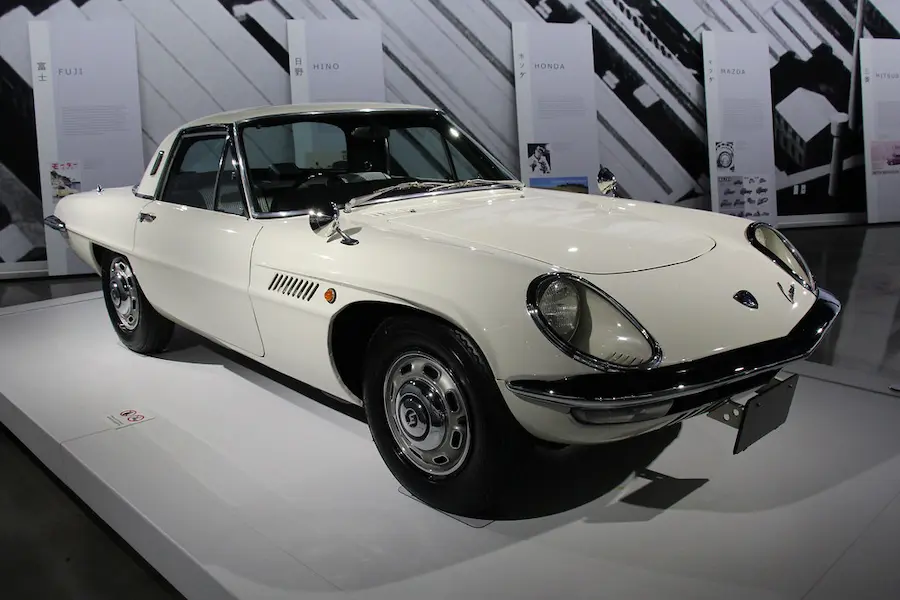Cars with Rotary Engine: A Unique Journey in Automotive History

Rotary engines, also known as Wankel engines, have fascinated car enthusiasts for decades. This article explores the fascinating journey of cars with Wankel engines, cars with a rotary engine, and cars with Wankel rotary engines. Invented by Felix Wankel in the 1920s, these engines are unique due to their triangular rotor design, which spins within an oval chamber. Unlike conventional piston engines, rotary engines are compact, lightweight, and capable of delivering smooth power. This design offers several benefits such as fewer moving parts, a high power-to-weight ratio, and reduced vibration.
Cars with rotary engines operate differently from piston engines. They use a rotor instead of pistons to create combustion. This rotor moves in a circular motion, which makes the engine run smoothly. However, cars with rotary engines also face challenges, including higher fuel consumption and difficulties with sealing the rotor tips.
The Birth of Cars with Rotary Engine
The story of cars with Wankel rotary engines began when Felix Wankel completed his first prototype in 1954 while working with NSU Motorenwerk. This innovative engine design was soon adopted by NSU, leading to the production of the NSU/Wankel Spider in 1964. Despite its innovative design, the rotary engine faced challenges like sealing issues and high fuel consumption, which initially hindered its widespread adoption.
In the 1960s, Mazda saw the potential of the rotary engine and decided to invest in its development. Mazda’s engineers worked tirelessly to address the initial shortcomings and enhance the engine’s performance and reliability. This commitment led to the creation of some iconic models that showcased the potential of cars with rotary engines.
Mazda’s Commitment to Cars with Rotary Engine
Mazda played a crucial role in the development and popularization of cars with Wankel engines. They acquired the technology from NSU and began refining it. Mazda’s dedication to rotary engines wasn’t just about performance; it was also about differentiation. By embracing this unique technology, Mazda set itself apart from other automakers. This strategy paid off, as Mazda’s rotary-powered vehicles gained a loyal following and established the brand’s reputation for innovation.
Mazda’s engineers focused on solving the problems associated with rotary engines, such as rotor tip wear and fuel consumption. Through persistent research and innovation, they succeeded in making rotary engines more reliable and efficient.
Iconic Mazda Models with Rotary Engines
Mazda Cosmo Sport
- Introduction Year: 1967
- Engine: 982 cc twin-rotor 10A engine
- Highlights: The first production car with a twin-rotor rotary engine, the Cosmo Sport was known for its sleek design and advanced engineering.
The Mazda Cosmo Sport, one of the most iconic cars with a rotary engine was a groundbreaking model that marked the beginning of Mazda’s journey with rotary engines. Its advanced engineering and stylish design made it a standout vehicle in the late 1960s. The Cosmo Sport’s twin-rotor engine provided a smooth and powerful driving experience, setting the stage for future rotary-powered cars.
Mazda RX-7
- Introduction Year: 1978
- Engine: Initially a 12A engine, later models featured the 13B engine
- Highlights: Spanning three generations, the RX-7 was celebrated for its performance, agility, and success in motorsport.
| Model | Engine | Introduction Year | Highlights |
|---|---|---|---|
| Cosmo Sport | 982 cc twin-rotor 10A | 1967 | First production car with twin-rotor rotary engine |
| RX-7 | 12A, later 13B | 1978 | Performance, agility, motorsport success |
The Mazda RX-7 is perhaps the most iconic rotary-powered car ever produced. Its lightweight design, coupled with the powerful rotary engine, made it a favorite among car enthusiasts and racers alike. The RX-7’s success on the track and in showrooms cemented its legacy as one of the greatest sports cars of all time.
The NSU Ro 80: A Pioneering Effort
The NSU Ro 80, launched in 1967, was one of the first production cars with Wankel rotary engines. Designed by Claus Luthe, the Ro 80 was praised for its futuristic design and smooth performance. However, early models faced reliability issues due to rotor tip wear, which affected its reputation despite its innovative design.
The Ro 80 was ahead of its time with features like aerodynamic styling and all-wheel disc brakes. Despite the initial problems, it remains a significant milestone in the history of rotary engines and a testament to NSU’s pioneering efforts. The car’s advanced technology and design set a new standard for future vehicles.
Mazda RX-8: The Modern Marvel
The Mazda RX-8, introduced in 2004, featured a 1.3-liter twin-rotor 13B engine, making it one of the modern cars with Wankel engines. Known for its balanced design and unique freestyle doors, the RX-8 combined sporty performance with everyday practicality. Despite its oil and fuel consumption issues, the RX-8 remained popular among car enthusiasts until its discontinuation in 2012.
The RX-8’s innovative design and engineering made it a standout model. Its lightweight construction and balanced weight distribution provided excellent handling and a thrilling driving experience. The RX-8 continues to inspire new generations of sports cars with rotary engines.
The Racing Legend: Mazda 787B
Mazda’s rotary engines also found success on the racetrack. The Mazda 787B made history in 1991 by becoming the first Japanese car to win the 24 Hours of Le Mans. Powered by a 2.6-liter four-rotor engine, the 787B demonstrated the potential of rotary engines in endurance racing.
The 787B’s victory at Le Mans was a testament to Mazda’s engineering prowess and commitment to rotary technology. This historic win showcased the durability and performance of rotary engines, solidifying Mazda’s reputation in the racing world.
Other Notable Rotary Engine Cars
Mazda Luce R130
- Introduction Year: 1969
- Engine: 1.3-liter twin-rotor
- Highlights: Mazda’s only front-wheel-drive rotary car, designed by Giorgetto Giugiaro.
The Mazda Luce R130 was a unique entry in Mazda’s rotary lineup. Its front-wheel-drive layout and elegant design made it a standout model. Although production numbers were limited, the Luce R130 remains a noteworthy example of Mazda’s innovation.
Mazda Rotary Pickup (REPU)
- Introduction Year: 1974
- Engine: 1.3-liter 13B rotary engine
- Highlights: The world’s only rotary-powered pickup truck, primarily sold in the US and Canada.
The Mazda Rotary Pickup (REPU) was an ambitious attempt to bring rotary power to the commercial vehicle market. Despite its limited success, the REPU demonstrated the versatility of rotary engines and their potential applications beyond sports cars.
Overcoming Challenges
Mazda’s engineers, led by Kenichi Yamamoto, faced numerous challenges in perfecting the rotary engine. Issues like rotor tip sealing and high fuel consumption were addressed through persistent research and innovation. By the 1970s, Mazda had successfully created a reliable and powerful rotary engine that found commercial success, especially in the US market.
Mazda’s perseverance in overcoming these challenges was crucial to the rotary engine’s survival. The company’s commitment to continuous improvement ensured that the rotary engine remained a viable option for performance-oriented vehicles.
Concept Cars and Future Prospects
Mazda continued to experiment with rotary engines in various concept cars. Notable among these was the Mazda RX-500, unveiled in 1970, which featured a twin-rotor 10A engine and innovative design elements. Although the rotary engine’s mainstream use has declined, Mazda’s ongoing research and occasional releases hint at a potential revival.
Concept cars like the RX-500 showcased Mazda’s forward-thinking approach and commitment to pushing the boundaries of automotive design. These experimental vehicles provided valuable insights into the future potential of rotary engines.
The Unique Mazda Roadpacer AP
The Mazda Roadpacer AP was a unique and somewhat unconventional vehicle. Introduced in 1975, it was a large sedan fitted with a rotary engine, aimed at providing a luxurious yet powerful driving experience. While the Roadpacer AP was not a commercial success, it demonstrated Mazda’s commitment to exploring different applications for rotary engines.
Despite its high fuel consumption and price, the Roadpacer AP remains an interesting chapter in Mazda’s history. It highlights the company’s willingness to take risks and innovate, even if the market response was not always favorable.
The Revival Efforts: Future of Rotary Engines
Mazda has not given up on rotary engines. Despite the challenges, they continue to invest in research and development to bring rotary engines back in new and innovative ways. In recent years, Mazda has hinted at the return of rotary engines in hybrid and electric vehicles. This approach could solve some of the traditional problems associated with rotary engines, like fuel consumption and emissions, while preserving their unique advantages.
Mazda’s ongoing efforts to revive rotary engines reflect their commitment to innovation and performance. The future of rotary engines may lie in their integration with new technologies, providing a blend of classic engineering with modern advancements.
Conclusion
Cars with Wankel engines, cars with a rotary engine, and cars with Wankel rotary engines have had a fascinating journey in the automotive world. From their early days with NSU to their heyday with Mazda, these engines have always stood out for their unique design and impressive performance. While they faced many challenges, cars with rotary engines have left an indelible mark on car history.
Mazda’s continued interest in rotary engines suggests that we may yet see a new era of these remarkable power units. Whether in concept cars, hybrids, or electric vehicles, the spirit of the rotary engine lives on, promising exciting developments for the future.
Read also: Cars with a V6 Engine: A Comprehensive Guide
Thanks for checking out this article on EngineEcho.com! Hope you found this article: "Cars with Rotary Engine: A Unique Journey in Automotive History" helpful! If you liked it and want to dive into more car engine topics, head over to our homepage. There's always something new to discover in the world of engines. Enjoy your reading journey!
Check out our previous article: Cars with a V6 Engine: A Comprehensive Guide






